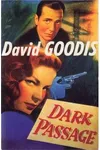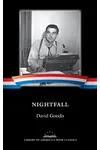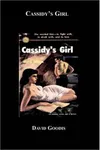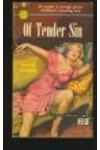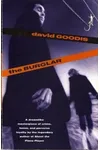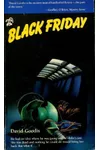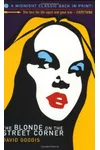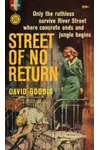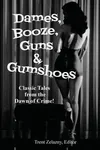Picture a Philadelphia storyteller who spun gritty tales of doomed dreamers and shadowy streets—meet David Goodis! Born in 1917, this noir fiction maestro transformed crime literature with his raw, soulful prose. From the classic Dark Passage to the haunting Shoot the Piano Player, Goodis’s work captivated readers and lit up Hollywood screens, leaving a legacy that still thrills.
Goodis didn’t just write stories; he lived the noir life, prowling Philly’s dive bars and weaving his observations into unforgettable narratives. His psychologically complex characters and jazzy style made him a cult favorite, especially among French filmmakers. Let’s dive into the world of this enigmatic wordsmith!
The Making of David Goodis
David Loeb Goodis was born on March 2, 1917, in Philadelphia to Russian-Jewish immigrant parents, William and Mollie Goodis. Growing up in a liberal household, his early knack for storytelling shone through as he edited his high school magazine and delivered a rousing valedictorian speech. After graduating from Temple University with a journalism degree in 1938, Goodis dove into writing, churning out pulp magazine stories and radio serials like Superman. His early novels faced rejection, but his persistence paid off when he landed in Hollywood in 1942, scripting for films like Destination Unknown.
David Goodis’s Unforgettable Stories
Goodis’s breakthrough came with Dark Passage (1946), a gripping tale of an innocent man framed for murder, serialized in The Saturday Evening Post and adapted into a classic film noir starring Humphrey Bogart and Lauren Bacall. Its moody atmosphere and taut suspense showcased Goodis’s knack for blending crime with emotional depth. Down There (1956), later retitled Shoot the Piano Player, followed Eddie Lynn, a former concert pianist turned bar musician entangled in his brothers’ criminal world. François Truffaut’s 1960 film adaptation cemented its iconic status.
Cassidy’s Girl (1951), a million-copy bestseller, explored a disgraced pilot’s toxic marriage against Philly’s gritty waterfront. The Burglar (1953), which Goodis adapted for the screen, delved into a thief’s moral struggles. His style—sparse yet poetic, with vivid depictions of Philadelphia’s underbelly—set him apart. Goodis’s characters, often outsiders like fugitives or the working poor, resonated with his own empathy for society’s downtrodden, rooted in his Jewish identity and keen observation of human flaws.
His novels pulsed with themes of failure, loyalty, and doomed love, wrapped in a jazzy, almost hallucinatory prose that critics like Robert Polito called “crafty and elegant.” Goodis didn’t just write noir; he redefined it, making Philadelphia a character as vivid as any protagonist.
Why David Goodis Matters
Goodis’s influence stretches far beyond his short life, which ended at 49 in 1967 after a stroke, possibly linked to a robbery beating. His raw, melancholic tales inspired modern crime writers like Duane Swierczynski and Ken Bruen, while French filmmakers like Truffaut and Jean-Jacques Beineix embraced his work, adapting novels like The Moon in the Gutter. His inclusion in the Library of America’s noir collections underscores his place alongside giants like Raymond Chandler. Goodis’s ability to humanize society’s outcasts keeps his stories timeless, offering a gritty lens on the American experience.
- Born: March 2, 1917, Philadelphia, PA
- Died: January 7, 1967
- Key Works: Dark Passage, Shoot the Piano Player, Cassidy’s Girl, The Burglar
- Notable Adaptation: Shoot the Piano Player (1960, dir. François Truffaut)
Ready to get lost in Goodis’s shadowy world? Snag Dark Passage or Shoot the Piano Player and dive into his thrilling noir universe!

